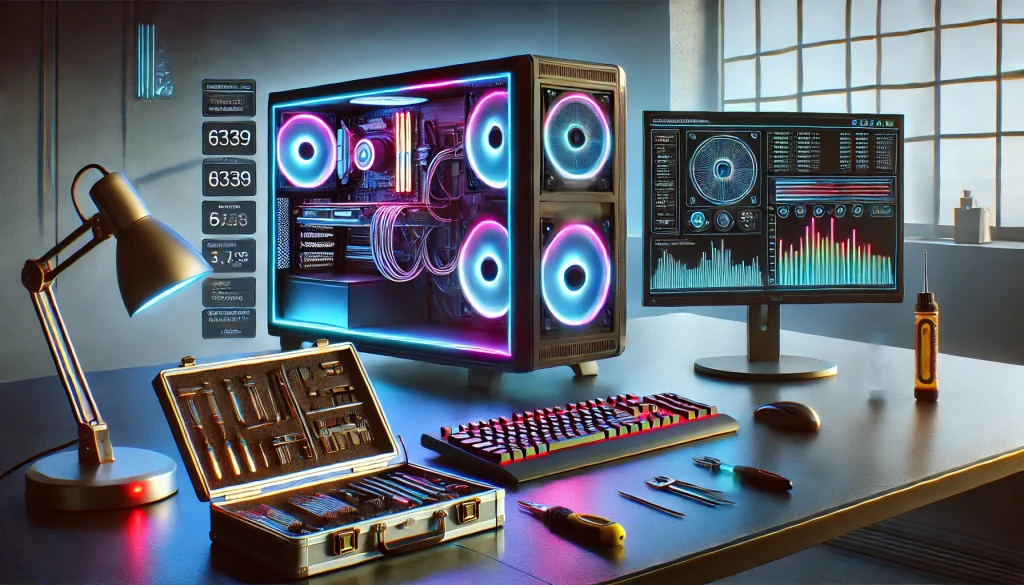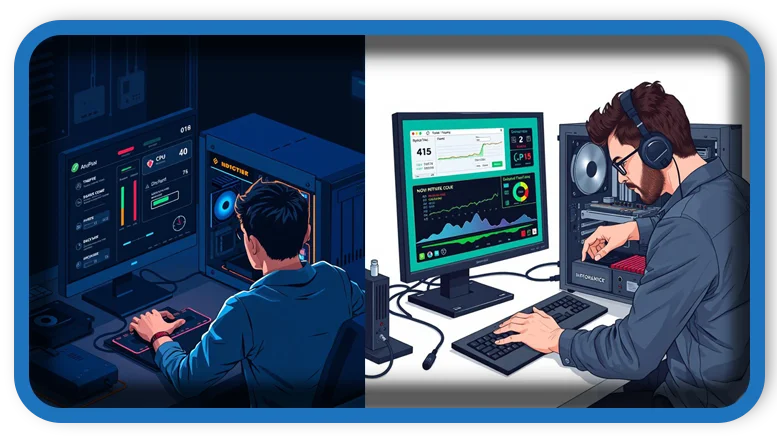⏲️ Estimated reading time: 3 min
How to Diagnose, Repair, and Maintain Your PC keeping your PC running at peak performance requires regular maintenance, quick diagnostics, and timely repairs. In this guide, we’ll cover essential steps to troubleshoot issues, fix hardware and software problems, and optimize your system for maximum speed and efficiency.
1. Diagnosing PC Issues
Before fixing any problem, it’s crucial to determine the cause. Here are some common signs of trouble and how to diagnose them:
a) Slow Performance
- Check Task Manager (Ctrl + Shift + Esc): Look for high CPU, RAM, or disk usage.
- Scan for Malware: Use Windows Defender or third-party antivirus tools.
- Check Startup Programs: Disable unnecessary apps via Task Manager > Startup.
b) Frequent Crashes or Blue Screen Errors (BSOD)
- Check Event Viewer (Win + X > Event Viewer): Look for critical errors.
- Run Windows Memory Diagnostic:
mdsched.execan check for RAM issues. - Check Drivers: Update GPU, chipset, and other essential drivers via Device Manager.
c) Overheating Issues
- Monitor Temperatures: Use HWMonitor or Core Temp to track CPU and GPU temps.
- Check Cooling System: Ensure fans are spinning properly and are not clogged with dust.
d) Storage & Disk Errors
- Run CHKDSK: Open Command Prompt as admin and type
chkdsk /f /r C: - Test SSD/HDD Health: Use CrystalDiskInfo or manufacturer tools.
2. Diagnose Repair Common PC Problems
Once you’ve diagnosed the issue, take the necessary steps to fix it.
a) Fixing Slow PC Performance
- Upgrade RAM: If you have 8GB or less, consider upgrading to at least 16GB.
- Switch to an SSD: If you’re still using an HDD, upgrading to an SSD can drastically improve performance.
- Optimize Startup: Disable unnecessary background apps using Task Manager.
b) Fixing Blue Screen Errors
- Uninstall Recent Updates: Go to Settings > Windows Update > Update History.
- Check for Corrupt System Files: Run
sfc /scannowin Command Prompt.
c) Fixing Overheating Problems
- Clean Dust from Fans and Heatsinks: Use compressed air to remove debris.
- Replace Thermal Paste: If your CPU runs hot, applying new thermal paste can help.
d) Fixing Storage Issues
- Defragment HDDs: Go to Disk Defragmenter (Not necessary for SSDs).
- Free Up Space: Use
Storage Sensein Windows settings orWinDirStatto find large files.

3. Maintaining Your PC for Maximum Performance
Regular maintenance helps prevent future issues and keeps your system running optimally.
a) Keep Software & Drivers Updated
- Enable Windows automatic updates.
- Update GPU, chipset, and essential drivers regularly.
b) Clean Your PC Inside and Out
- Remove dust from fans, vents, and components at least once every three months.
- Keep cables organized to improve airflow.
c) Regularly Scan for Malware & Viruses
- Use a reputable antivirus program.
- Enable Windows Defender and perform full scans weekly.
d) Manage Storage & Backups
- Regularly clean up temp files using
Disk Cleanupor CCleaner. - Use cloud storage or external drives for backups.
e) Optimize Power & Performance Settings
- Set your PC to High Performance Mode via Control Panel > Power Options.
- Adjust virtual memory settings to optimize RAM usage.
Conclusion
By diagnosing issues early, performing timely repairs, and maintaining your PC regularly, you can ensure it runs at full performance for years to come. Implement these strategies to keep your system fast, stable, and efficient.
Tags: PC maintenance, diagnose PC issues, fix slow computer, optimize performance, PC repair, overheating fix, SSD upgrade, malware removal, driver updates, improve PC speed
Only logged-in users can submit reports.
Discover more from HelpZone
Subscribe to get the latest posts sent to your email.

